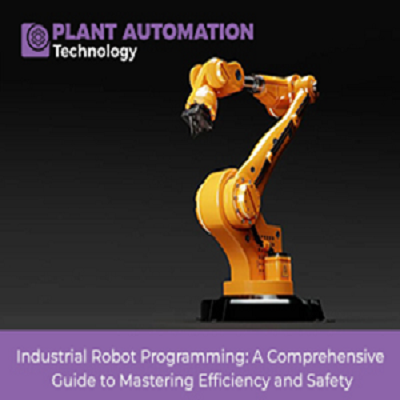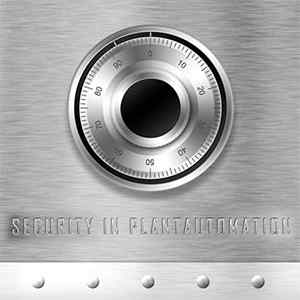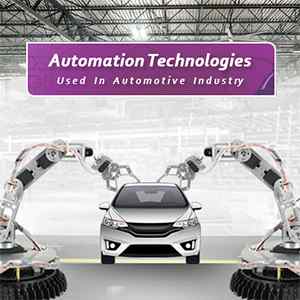Industrial Robot Programming: A Comprehensive Guide to Mastering Efficiency and Safety

Introduction
Industrial robot programming plays a vital role in maximizing efficiency and productivity in manufacturing processes. By adopting best practices and integrating safety measures, manufacturers can optimize their operations and achieve remarkable results. In this article, we will explore the best practices for industrial robot programming and the importance of prioritizing safety. Let's dive in!
Best Practices for Industrial Robot Programming
Industrial robot programming involves various practices that enhance efficiency and streamline manufacturing processes. By implementing these best practices, manufacturers can optimize their operations and achieve maximum productivity. Here are some key best practices to consider.
- Defining Clear Objectives
- Selecting the Right Programming Language:
- Utilizing Offline Programming
- Embracing Teach Pendant Programming
- Leveraging Waypoint Programming
| Read More: Robot Programming Role in Industry 4.0: Advancing Productivity |
I. Industrial Robot Programming for Efficiency
Industrial robot programming is crucial to enhancing efficiency in manufacturing processes. By leveraging advanced programming techniques, manufacturers can optimize their operations, increase productivity, and reduce operational costs. Efficient programming ensures robots perform tasks accurately, resulting in streamlined workflows and improved overall efficiency.
Industrial robot programming is a crucial factor in achieving enhanced efficiency in manufacturing processes. By leveraging advanced programming techniques, manufacturers can optimize their operations, increase productivity, and reduce operational costs. Efficient programming ensures that robots perform tasks with precision and accuracy, resulting in streamlined workflows and improved overall efficiency.
It is critical to understand the individual requirements and objectives of the production process to achieve increased efficiency through industrial robot programming. This entails analyzing the jobs that must be automated and determining the most appropriate sequence of actions for the robots to follow. Manufacturers can maximize output while minimizing lost time and resources by properly configuring robots to perform these operations efficiently.
Moreover, industrial robot programming allows customization and fine-tuning of robot movements. By optimizing path planning and motion control algorithms, programmers can minimize the time robots take between different workstations or perform specific tasks. This reduction in unnecessary movement leads to significant time savings and increased efficiency.
II. Introduction to robot programming languages - Programming Languages for Effective Robot Control
Programming languages play a vital role in controlling industrial robots. Two commonly used programming languages in robotics are Robot Programming Language (RPL) and Robotic Operating System (ROS). These languages provide a robust set of commands and functions specifically designed for controlling robots.
RPL, a high-level programming language, offers a user-friendly interface for programming robots. It provides intuitive commands for controlling robot movements, interacting with sensors, and executing complex tasks. RPL allows programmers to write concise and readable code, simplifying the programming process and improving overall productivity.
ROS, on the other hand, is a flexible and powerful framework for robot programming. It provides a standardized architecture that enables seamless communication and coordination among different robotic components. With ROS, programmers can leverage pre-built libraries and modules, reducing development time and effort. ROS' modular nature allows for scalability and easy integration of additional functionalities into the robot control system.
By utilizing these programming languages, manufacturers can achieve effective control over industrial robots, enabling precise and reliable task execution. The use of standardized programming languages also promotes code reusability, simplifies maintenance, and facilitates collaboration among robotics developers.
III. Benefits of offline programming for industrial robots - Offline Programming for Simulated Optimization
Offline programming is a valuable technique that allows programmers to simulate and optimize robot actions without physical access to robots. Dedicated software tools provide a virtual environment where programmers can create and visualize virtual robot cells. This simulation environment mimics the real-world manufacturing environment, enabling programmers to test and refine their programs before deploying them on robots.
Offline programming has two benefits. Firstly, it saves valuable production time by eliminating the need to halt operations for programming tasks. Since programming can be done offline, robots can continue their tasks uninterrupted, resulting in minimal downtime and increased productivity.
Secondly, offline programming enables programmers to optimize their programs by testing and refining them in a simulated environment. They can evaluate different scenarios, adjust robot parameters, and fine-tune program logic to achieve optimal performance. This iterative approach helps identify and resolve potential issues or inefficiencies before they impact the actual production process.
IV. Step-by-step guide to teach pendant programming - Teach Pendant Programming for Flexibility and Adaptability
Teach pendant programming offers a flexible and adaptable approach to programming industrial robots. In this method, operators use a handheld device called a teach pendant to manually guide the robot through desired movements and record the sequence of motions as a program.
One of the key advantages of teach pendant programming is its flexibility. It allows operators to intuitively adjust and adapt the robot's movements in real-time, based on their expertise and understanding of the task at hand. This human-machine interaction enables operators to fine-tune robot actions, ensuring optimal performance in complex and dynamic situations.
Teach pendant programming for rapid prototyping and iterative development. Operators can quickly record different motion sequences, test them, and refine them as needed. This iterative process allows for efficient program development and saves time compared to traditional programming methods.
In addition, teach pendant programming is particularly useful in situations where tasks require human intuition and adaptability. For example, in tasks involving delicate manipulation or handling of irregular objects, operators can use the teach pendant to guide the robot with precision. They can also make real-time adjustments to ensure the desired outcome.
V. Optimizing Waypoint Programming for Precise Robot Movements
Waypoint programming is a technique that involves defining specific points or positions that the robot should move to during its operation. These waypoints can be specified using Cartesian coordinates (X, Y, Z) or joint angles, depending on the robot's configuration.
By accurately defining waypoints, programmers ensure that the robot follows precise paths and aligns with workpieces or tools with high accuracy. This level of precision is particularly crucial in applications where tight tolerances are required, such as welding or assembly processes.
Waypoint programming enables robots to execute complex tasks that involve multiple intermediate positions. By specifying a series of waypoints, programmers can define intricate motion sequences that allow the robot to navigate through challenging paths or avoid obstacles in the workspace.
Furthermore, waypoint programming enhances robot handling of complex trajectories. For instance, in applications such as painting or 3D scanning, the robot may need to follow a specific trajectory or curve. By defining a set of waypoints along the desired path, programmers can ensure that the robot accurately traces the trajectory, resulting in high-quality outcomes.
VI: Integrating sensors in industrial robot programming for increased efficiency
Sensor integration is a key aspect of industrial robot programming that enhances robot adaptability in real-world environments. By integrating various sensors into the programming framework, manufacturers can enable robots to perceive and respond to their surroundings. This makes them more versatile and adaptable to changing conditions.
One common type of sensor used in industrial robot programming is a vision system. Vision systems provide robots with the ability to "see" and interpret visual information from their environment. By integrating cameras and image processing algorithms, robots can identify objects, locate targets, and perform tasks that require visual inspection or recognition. Vision-guided robots can adapt to variations in object placement, shape, or orientation, ensuring accurate and reliable performance.
Sensor integration also requires force/torque sensors. These sensors enable robots to measure and respond to external forces and torques exerted on their end effectors or during interactions with objects. By integrating force/torque sensors into programming, robots can adjust their movements and exert appropriate forces when handling delicate or fragile objects. This integration ensures safe and precise interactions with the environment, preventing damage or accidents.
Proximity or non-contact sensors detect the presence or proximity of objects in the robot's workspace. These sensors provide feedback about the robot's surroundings. They can be used to establish safety zones or trigger specific actions based on the robot's proximity to other objects or humans. By integrating proximity sensors into programming, manufacturers can enhance safety and prevent collisions, ensuring a secure working environment.
The integration of sensors into industrial robot programming enables robots to adapt their movements and actions based on real-time feedback from the environment. By combining sensor data with programmed instructions, robots can make intelligent decisions and adjust their behavior accordingly. This adaptability allows robots to handle varying workpieces, adjust their grip or force, and respond to changes in the environment. This results in increased efficiency and productivity.
| Also Read: Robotics Programming for Pick-and-Place Operations in Manufacturing |
VII. Ensuring Safety in Industrial Robot Programming
Safety considerations are of importance in industrial robot programming. While robots can significantly improve efficiency and productivity, they must be programmed with safety measures to protect both human operators and the equipment.
One critical aspect of safety programming is defining safety zones or restricted areas. These zones are predefined areas where humans should not enter while the robot is operating. By programming safety zones, the robot can detect when a human enters a prohibited area. It can automatically halt its movement or reduce its speed to prevent accidents or collisions.
Speed limits are another safety measure programmed into industrial robots. By setting maximum speeds for robot movements, manufacturers can ensure robots operate within safe limits. This prevents excessive speeds that may cause accidents or damage to equipment. Limiting robot speed also allows human operators to work safely alongside robots, reducing injury risk.
Emergency stop mechanisms are crucial to ensuring industrial robot safety. These mechanisms can be programmed to trigger an immediate halt to robot motion in emergency situations. By incorporating emergency stop functionality into programming, operators can quickly react to hazardous situations or unexpected events. This feature provides an additional layer of safety, allowing immediate intervention to prevent accidents or injuries.
In conclusion, prioritizing safety in industrial robot programming is essential to protect human operators and prevent accidents. By incorporating safety measures such as defining safety zones, setting speed limits, and implementing emergency stop mechanisms, manufacturers can ensure safe and secure robot operations. These safety considerations enhance industrial robotics efficiency by providing a secure working environment and instilling confidence in human-robot collaboration.
| Also Read: The Impact of Robot Manufacturers on Job Markets: Challenges and Opportunities |
Conclusion
Industrial robot programming plays a vital role in enhancing efficiency and precision in manufacturing processes. By utilizing programming languages like RPL and ROS, implementing offline programming techniques, leveraging teach pendant programming, and employing waypoint programming, manufacturers can optimize their robotic operations for maximum efficiency. These programming methods facilitate flexibility, adaptability, and precise control over industrial robots. This leads to improved productivity, reduced costs, and increased market competitiveness.







